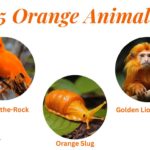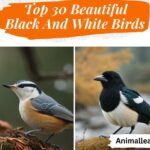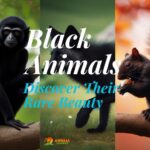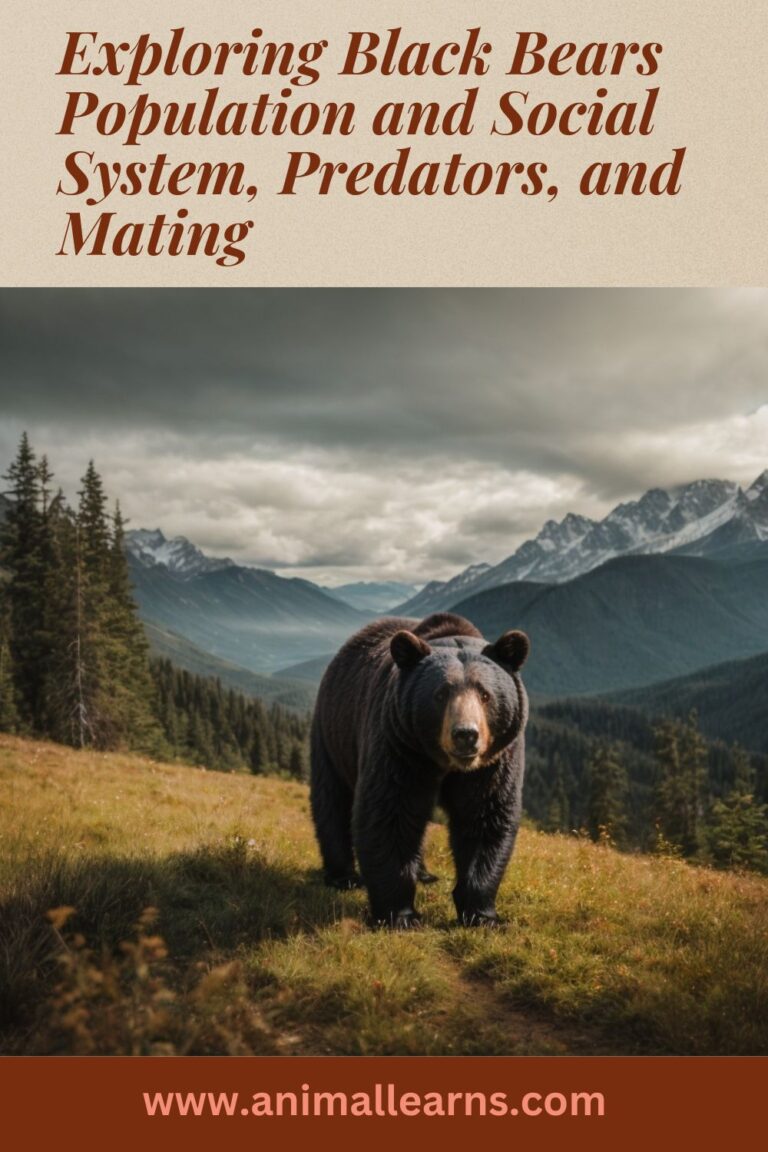Top 13 Blue Animals: List with Pictures

A variety of blue animals inhabit the animal kingdom, from the depths of the ocean to the skies high above. From the depths of the ocean to the skies above, these blue creatures display a variety of striking blue shades.
Amidst the natural canvas, blue animals gracefully coexist with vibrant orange, pristine white, and deep black animals, creating a captivating symphony of colors in the wild.
It is not unusual for us to see blue everywhere in our lives – from the sky above to the vast ocean, and even in the delicious flavor of blueberries. The fact remains, however, that blue is nature’s elusive hue, despite its prevalence in our visual landscape. Surprisingly, blue is the least common natural color.
A handful of water reveals the true, clear nature of the ocean, as we marvel at its seemingly infinite shades of blue.
Discovering the Enchanting World of Blue Animals
Contents
The natural world is home to a fascinating array of creatures, and among them are those adorned with the mesmerizing hue of blue. From the depths of the ocean to the lush rainforests of distant lands, a comprehensive blue animals list showcases the diversity of species that boast this unique coloration.
In nature, the ocean provides a stunning canvas for marine life with blue animals in the ocean captivating our imaginations, while the rainforest and jungle landscapes unfold stories of vibrant avian and amphibian residents.
Australia, with its distinctive wildlife, is no exception, featuring an intriguing collection of blue animals in Australia that highlight the continent’s ecological uniqueness.
Delve into the azure waters and explore the world of aquatic wonders with blue animals in water, or step into the realm of fantasy and animation with the enchanting portrayal of blue animals in Disney and the pixelated charm of blue animals in Minecraft.
Blue Animals List
| Animal Name | Animal Name |
| 1. Russian Blue Cat | 8. Hyacinth Macaw |
| 2. Blue Whale | 9. Spix’s Macaw |
| 3. Blue Crane | 10. Blue Iguana |
| 4. Splendid Fairywren | 11. Blue Sea Star |
| 5. Greater Blue-eared Starling | 12. Ulysses Butterfly |
| 6. Blue Dacnis | 13. Moor Frog |
| 7. Peacock |
Russian Blue Cat

| Attribute | Information |
| Scientific Name | Felis catus |
| Size | Medium |
| Weight | 7-12 pounds (3-5.4 kg) |
| Color | Blue-gray |
| Diet | Carnivorous |
| Location | Domesticated, worldwide |
| Group | Mammal |
Known for its shimmering, short, dense coat and its shimmering, blue-gray appearance, the Russian Blue cat is a unique feline breed. Known for their striking emerald-green eyes and gentle, reserved demeanor, these elegant cats originate in northern Russia.
It is common for Russian Blues to be hypoallergenic, making them the perfect choice for cat allergy sufferers. They are popular as companion animals because of their aristocratic appearance and keen intelligence.
Blue Whale

| Attribute | Information |
| Scientific Name | Balaenoptera musculus |
| Size | Largest animal on Earth |
| Weight | Up to 200 tons |
| Color | Bluish-gray |
| Diet | Filter feeder |
| Location | Oceans worldwide |
| Group | Mammal |
The Blue Whale, a magnificent marine giant and a prime example of blue mammals, effortlessly navigates the ocean depths, showcasing the awe-inspiring beauty and scale of these incredible creatures.
There is no doubt that the majestic Blue Whale is the largest animal in the entire universe. The colossal body of this marine giant, which belongs to the baleen whale suborder, is adorned with a magnificent blue-gray hue.
In order to survive, Blue Whales primarily consume krill, a small shrimp-like organism. Marine biologists and nature lovers alike are fascinated by these massive leviathans because of their gentle and nonaggressive nature.
Blue Crane

| Attribute | Information |
| Scientific Name | Grus paradisea |
| Size | Medium |
| Weight | 3.5-6.2 kg (7.7-13.7 lbs) |
| Color | Blue-gray, white |
| Diet | Omnivorous |
| Location | Southern Africa |
| Group | Bird |
This striking bird is native to Southern Africa. A slate-blue bird with an elongated neck and golden-yellow eyes, this elegant crane is known for its striking appearance.
As South Africa’s national bird, the Blue Crane is not only a visual spectacle, but also holds cultural significance. There are conservation challenges facing the species, emphasizing the need to preserve its natural habitat.
Splendid Fairywren

| Attribute | Information |
| Scientific Name | Malurus splendens |
| Size | Small |
| Weight | 5-13 grams |
| Color | Blue, black, brown |
| Diet | Insects, small invertebrates |
| Location | Australia |
| Group | Bird |
A small and vibrantly colored bird endemic to Australia, the Splendid Fairywren is classified as Malurus splendens. The striking blue and black plumage of males of this species captivates observers during breeding season.
Their tiny size makes them a popular subject of study for ornithologists studying avian behavior and ecology, but they possess complex social structures and unique mating behaviors.
Greater Blue-eared Starling

| Attribute | Information |
| Scientific Name | Lamprotornis chalybaeus |
| Size | Medium |
| Weight | 60-75 grams |
| Color | Blue, green, purple |
| Diet | Omnivorous |
| Location | Sub-Saharan Africa |
| Group | Bird |
The Greater Blue-eared Starling is a species of starling native to sub-Saharan Africa that sparkles in its iridescent beauty. The bird’s plumage is an intriguing blend of metallic and blue hues.
Its vocalizations and communal roosting behaviors contribute to the dynamic avian ecosystem in which it thrives because they are highly social birds.
Blue Dacnis

| Attribute | Information |
| Scientific Name | Dacnis cayana |
| Size | Small |
| Weight | 9-14 grams |
| Color | Bright blue, black |
| Diet | Insects, fruits |
| Location | Central and South America |
| Group | Bird |
There are several species of neotropical birds that inhabit Central and South America, including the Blue Dacnis from the genus Dacnis. Blue Dacnis males are known for their electric blue plumage, attracting people’s attention with their dazzling coloration.
It is common to observe these birds in mixed-species flocks in tropical forests, demonstrating the interconnectedness of avian life. The Blue Dacnis, a dazzling bird in the realm of blue animals, flaunts vibrant plumage that adds a vivid burst of color to the tropical landscapes it calls home.
Peacock

| Attribute | Information |
| Scientific Name | Pavo cristatus |
| Size | Large |
| Weight | 4-6 kg (8.8-13.2 lbs) |
| Color | Various, iridescent |
| Diet | Omnivorous |
| Location | South Asia |
| Group | Bird |
An elegant bird of the pheasant family, the peacock has extravagant plumage and captivating courtship displays, making it a member of the pheasant family.
Pavo cristatus is an Indian peafowl with an electric blue neck and head and an iridescent train of feathers adorned with eye spots that make it stand out from the rest.
Peacocks continue to captivate audiences with their vibrant colors and ornate beauty throughout history, as well as their symbolic significance across cultures.
Hyacinth Macaw

| Attribute | Information |
| Scientific Name | Anodorhynchus hyacinthinus |
| Size | Large |
| Weight | 1.2-1.7 kg (2.6-3.7 lbs) |
| Color | Brilliant blue |
| Diet | Seeds, nuts |
| Location | Central and South America |
| Group | Bird |
In addition to being the largest of all parrot species, the Hyacinth Macaw, scientifically named Anodorhynchus hyacinthinus, is also known as the Hyacinth Macaw. These macaws are known for their powerful beaks and agile flight, which are common in the rainforests of South America, particularly Brazil.
Due to habitat loss and illegal pet trade, the conservation status of these birds is concerning, emphasizing the need for concerted conservation efforts.
Spix’s Macaw

| Attribute | Information |
| Scientific Name | Cyanopsitta spixii |
| Size | Medium |
| Weight | 300-400 grams |
| Color | Blue |
| Diet | Seeds, fruits |
| Location | Brazil |
| Group | Bird |
In spite of its stunning blue plumage, the Spix’s Macaw, also known as Cyanopsitta spixii, is critically endangered. Due to habitat destruction and pet trade, this macaw, indigenous to Brazil, suffered a severe population decline.
It is important to recognize that human activity plays an important role in preserving biodiversity by protecting and rehabilitating the remaining individuals.
Blue Iguana

| Attribute | Information |
| Scientific Name | Cyclura lewisi |
| Size | Large |
| Weight | Up to 30 kg (66 lbs) |
| Color | Grayish-blue |
| Diet | Herbivorous |
| Location | Grand Cayman Island |
| Group | Reptile |
It is endemic to Grand Cayman Island and is called the Blue Iguana, scientifically known as Cyclura lewisi. This iguana species is unique in that it possesses a distinctive royal blue coloration, which distinguishes it from other species.
In order to ensure the survival of this unique reptilian species, conservation efforts are focused on habitat restoration and captive breeding programs.
Blue Sea Star

| Attribute | Information |
| Scientific Name | Linckia laevigata |
| Size | Varied, up to 30 cm (12 in) |
| Weight | Not applicable |
| Color | Blue, sometimes purple |
| Diet | Detritivore |
| Location | Indo-Pacific |
| Group | Echinoderm |
In the Indo-Pacific region, the Blue Sea Star, or Linckia laevigata, is an exotic echinoderm. A feature of this starfish contributes to its resilience in the dynamic marine environment since it has the ability to regenerate lost limbs, which gives it a vibrant blue coloration.
Reef ecosystems are dependent on the Blue Sea Star, which contributes to their balance and biodiversity.
Ulysses Butterfly
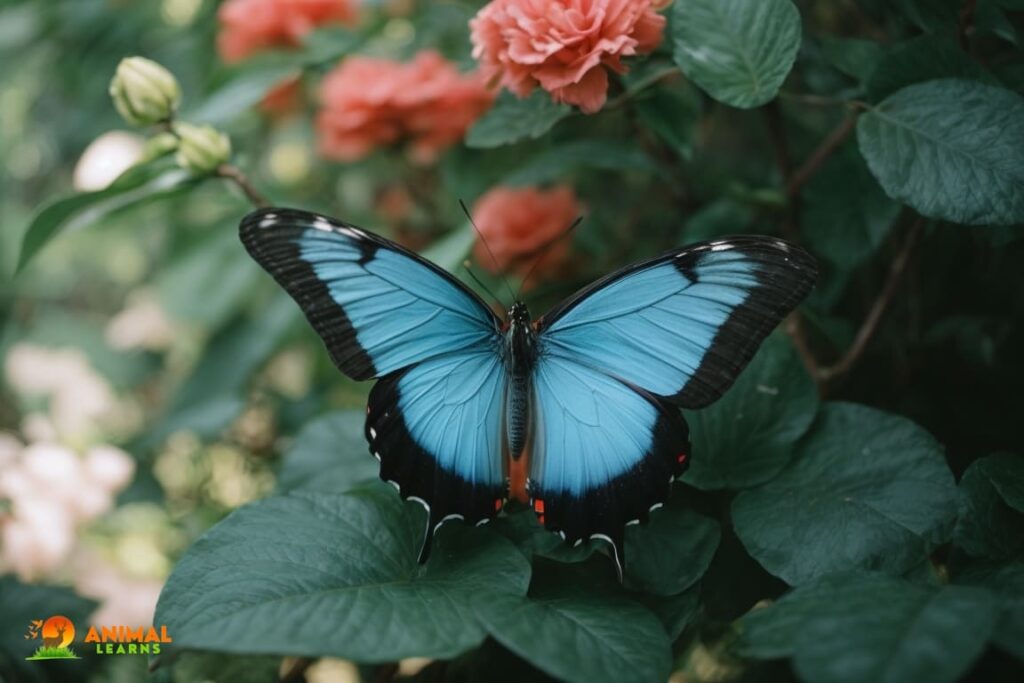
| Attribute | Information |
| Scientific Name | Papilio ulysses |
| Size | Large |
| Weight | Not applicable |
| Color | Electric blue, black |
| Diet | Nectar |
| Location | Northern Australia |
| Group | Insect |
In Australia, Indonesia, and Papua New Guinea, the Ulysses Butterfly is a large and stunning butterfly known as Papilio ulysses. A captivating sight in its natural habitat is the Ulysses Butterfly, whose wings are brilliant electric blue with black edges. Symbolizing the delicate balance and beauty of nature, its lifecycle involves intricate metamorphosis.
Moor Frog
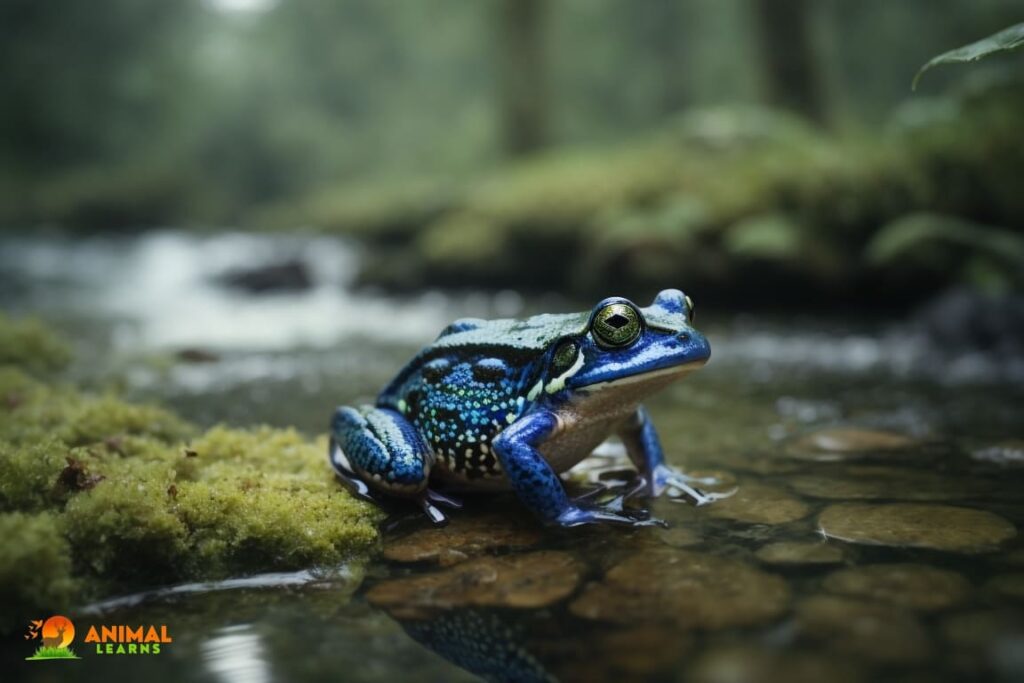
| Attribute | Information |
| Scientific Name | Rana arvalis |
| Size | Small |
| Weight | Up to 50 grams |
| Color | Brown, with blue markings |
| Diet | Insects, small invertebrates |
| Location | Europe and Asia |
| Group | Amphibian |
Throughout Europe and Asia, the Moor Frog can be found in wetlands and moorlands. A distinct blue coloration can be observed in certain populations during the breeding season, particularly in males.
Moor Frogs have adapted to diverse habitats and breed differently, making them an interesting species to study amphibian ecology. This phenomenon is attributed to specialized skin pigments.
Unveiling the Secrets of Blue Animals
The rarity of truly blue animals has long been a source of wonder and curiosity among nature enthusiasts. Why are blue animals rare? This question invites us to explore the intricacies of pigmentation and evolutionary adaptations that result in this captivating and unusual coloration.
Some blue animal, although scarce, captivate our attention with their distinctive hues, prompting the question of what makes them truly blue. While examining the list of some blue animals, it becomes evident that their rarity adds an air of mystique to the natural world.
Among the most elusive are the most rare blue animals, sparking a sense of awe and appreciation for the diverse ways in which life manifests itself. From wild animals with piercing blue eyes to those with enchanting white eyes, the world of fauna unfolds a captivating narrative, showcasing the existence of animals with light blue coats and the evolutionary significance of having blue eyes in animals.
Understanding the mechanisms behind these characteristics prompts us to ponder the profound question: Why do animals have blue eyes?
FAQs
Are Blue Animals Naturally Occurring?
Yes, blue animals are naturally occurring. Their coloration may be due to pigmentation, structural color, or a combination of both.
Why Are Blue Animals Considered Rare?
Blue animals are often considered rare because the genetic and environmental conditions needed for the expression of blue pigments are not as common as other colors in nature.
Do All Blue Animals Have Blue Eyes?
No, not all blue animals have blue eyes. While some blue animals exhibit blue eyes, others may have eyes of different colors, such as white, brown, or yellow.
What Are Some Examples of Blue Animals?
Examples of blue animals include the blue-ringed octopus, blue poison dart frog, blue jay, blue tang fish, and the blue whale, among others.
Are Blue Animals Endangered?
The conservation status of blue animals varies. While some blue species face threats and are endangered, others thrive in their natural habitats. Conservation efforts are crucial to protect these unique creatures and their ecosystems.


